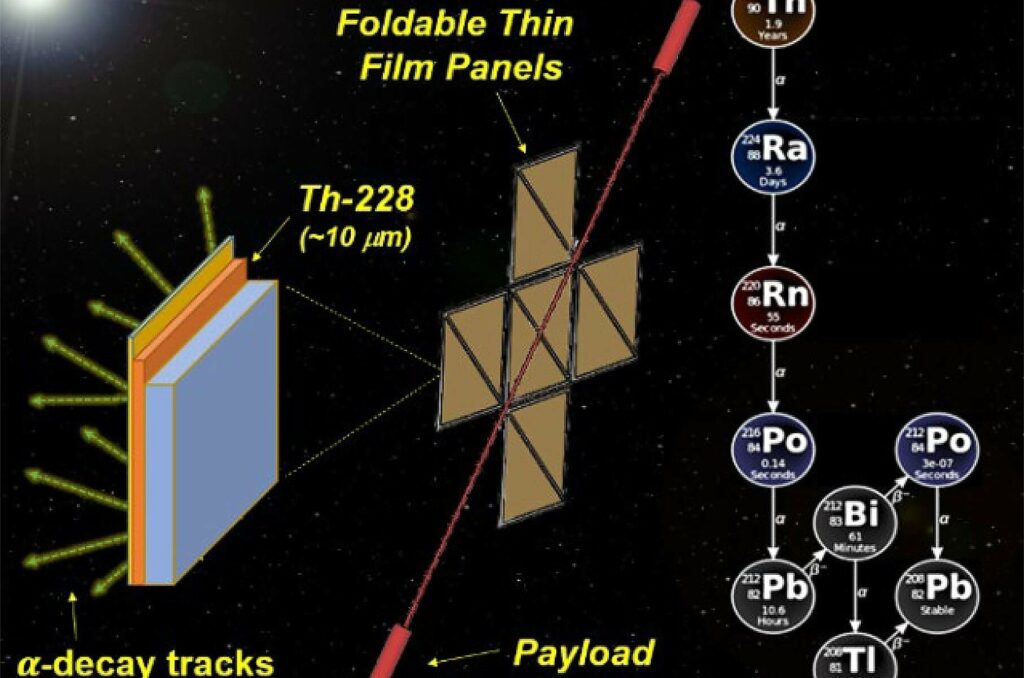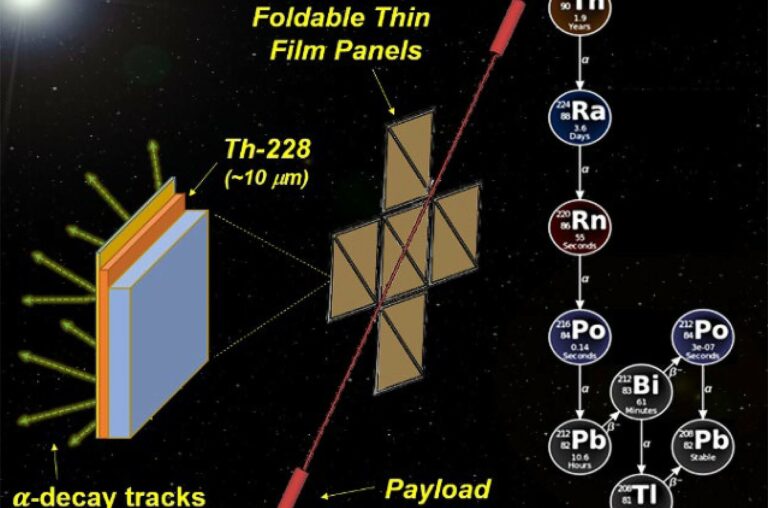NASA Funds Innovative Nuclear Rocket Concept for the Future of Space Exploration and Astrophysics
In the upcoming years, NASA has outlined its plans to launch multiple astrobiology missions to Venus and Mars in order to search for signs of extraterrestrial life. These missions will coincide with manned expeditions to the moon, marking the first time since the Apollo Era, as well as the initial manned missions to Mars.
Furthermore, there are ambitious endeavors beyond the inner solar system, with plans to dispatch robotic missions to Europa, Titan, and other “Ocean Worlds” that have the potential to harbor unique forms of life. To achieve these objectives, NASA is investing in innovative technologies through the NASA Innovative Advanced Concepts (NIAC) program.
This year’s selection encompasses a range of intriguing advancements, such as solar-powered aircraft, bioreactors, lightsails, hibernation technology, astrobiology experiments, and nuclear propulsion technology. Notably, one of the proposals chosen for development is the Thin Film Isotope Nuclear Engine Rocket (TFINER), put forth by James Bickford and his colleagues at the Charles Stark Draper Laboratory—an independent technology developer based in Massachusetts.
The TFINER concept relies on the decay of radioactive isotopes to generate propulsion and has recently been approved for Phase I development by the NIAC.

As outlined in their proposal paper, the advancement of propulsion technology is crucial for the realization of various next-generation mission concepts. These include deploying a telescope to the focal point of the sun’s gravitational lens and intercepting a passing interstellar object. These mission concepts necessitate achieving velocities that cannot be attained through conventional rocketry methods.
While lightsails are currently being studied for their potential use in rapid-transit missions within the solar system and Proxima Centauri, they are not capable of executing the necessary propulsive maneuvers in deep space.
On the other hand, nuclear concepts such as nuclear-thermal and nuclear-electric propulsion (NTP/NEP) are viable options with the required thrust to reach destinations in deep space. However, as Bickford and his team have pointed out, these concepts are also bulky, heavy, and expensive to manufacture.
In contrast to these options, our proposal introduces a thin film nuclear isotope engine that possesses the capability to explore, rendezvous, and retrieve samples from distant and swiftly moving interstellar objects. Additionally, this technology enables the repositioning of a gravitational lens telescope, allowing a single mission to observe multiple high-value targets.
The fundamental idea behind this concept is similar to that of a solar sail, but instead of utilizing light, it relies on thin sheets of a radioactive isotope. The momentum generated by the decay products of this isotope is used to generate thrust.
According to their description, the initial design incorporates sheets of Thorium-228, which are approximately 10 micrometers (0.01 mm) thick. This naturally radioactive metal, commonly used in radiation therapy, undergoes alpha decay with a half-life of 1.9 years. Thrust is generated by applying a ~50-micrometer (0.05 mm) thick absorber layer on one side, which directs the alpha particles in the opposite direction of travel.
To power the spacecraft, it would require 30 kg (66 lbs) of Thorium-228 spread over an area of more than 250 m2 (~2,700 square feet), providing a thrust of over 150 km/s (93 mi/s).
For comparison, the fastest mission achieved using conventional propulsion was the Parker Solar Probe (PSP), which reached a velocity of 163 km/s (101 mi/s) as it approached the closest point in its orbit around the sun (perihelion). However, this was primarily due to the gravity-assist maneuver with Venus and the gravitational pull of the sun.
The system offers several advantages, primarily its simplicity which is based on well-known physics and materials. Additionally, it is scalable, allowing for the accommodation of smaller payloads such as sensors or larger missions like space telescopes.
By utilizing a single conventional launch vehicle, multiple spacecraft can be inserted into a solar escape trajectory, requiring an escape velocity of 42.1 km/s (26 mi/s). The thrust sheets can be reconfigured to enable thrust vectoring and spacecraft maneuvers, allowing the spacecraft to explore future missions once it reaches deep space.
These missions include sending telescopes to the focal point of the Solar Gravitational Lens (SGL) and rendezvousing with interstellar objects (ISOs) to potentially return samples to Earth for analysis. Moreover, the spacecraft would have enough capacity to independently rendezvous with an ISO and bring back samples.
Furthermore, the natural decay of the sheets can be utilized by incorporating a layer of thermoelectric materials (or Peltier Tiles) to generate excess electrical power at an efficiency of about 1%, amounting to approximately 50 kW. Additionally, a layer of beta-particle emitting material can be added to neutralize alpha radiation and create a voltage bias that directs exhaust emissions and takes advantage of outbound solar wind.
The authors also highlight the potential of incorporating multiple “stages” in the design of the concept, utilizing Actinium-227 (or other isotopes with longer half-lives), to achieve higher velocity throughout extended mission durations. Likewise, a modified version that relies on Thorium-233 can exploit the Thorium fuel cycle—a sequential decay of isotopes that eventually yields Uranium-232—which they argue would result in a remarkable performance increase of approximately 500%. Undoubtedly, this proposed technology offers numerous prospects for future advancements and could be employed to accomplish various mission objectives.
These missions are in line with NASA’s long-term vision, encompassing the exploration of ISOs at close range, the identification of potentially habitable planets in nearby star systems, the undertaking of crewed missions beyond the Earth-moon system, and the quest for extraterrestrial life on other celestial bodies.
This article is republished from PhysORG under a Creative Commons license. Read the original article.
Do not forget to share your opinion with us to provide you with the best posts !




0 Comments